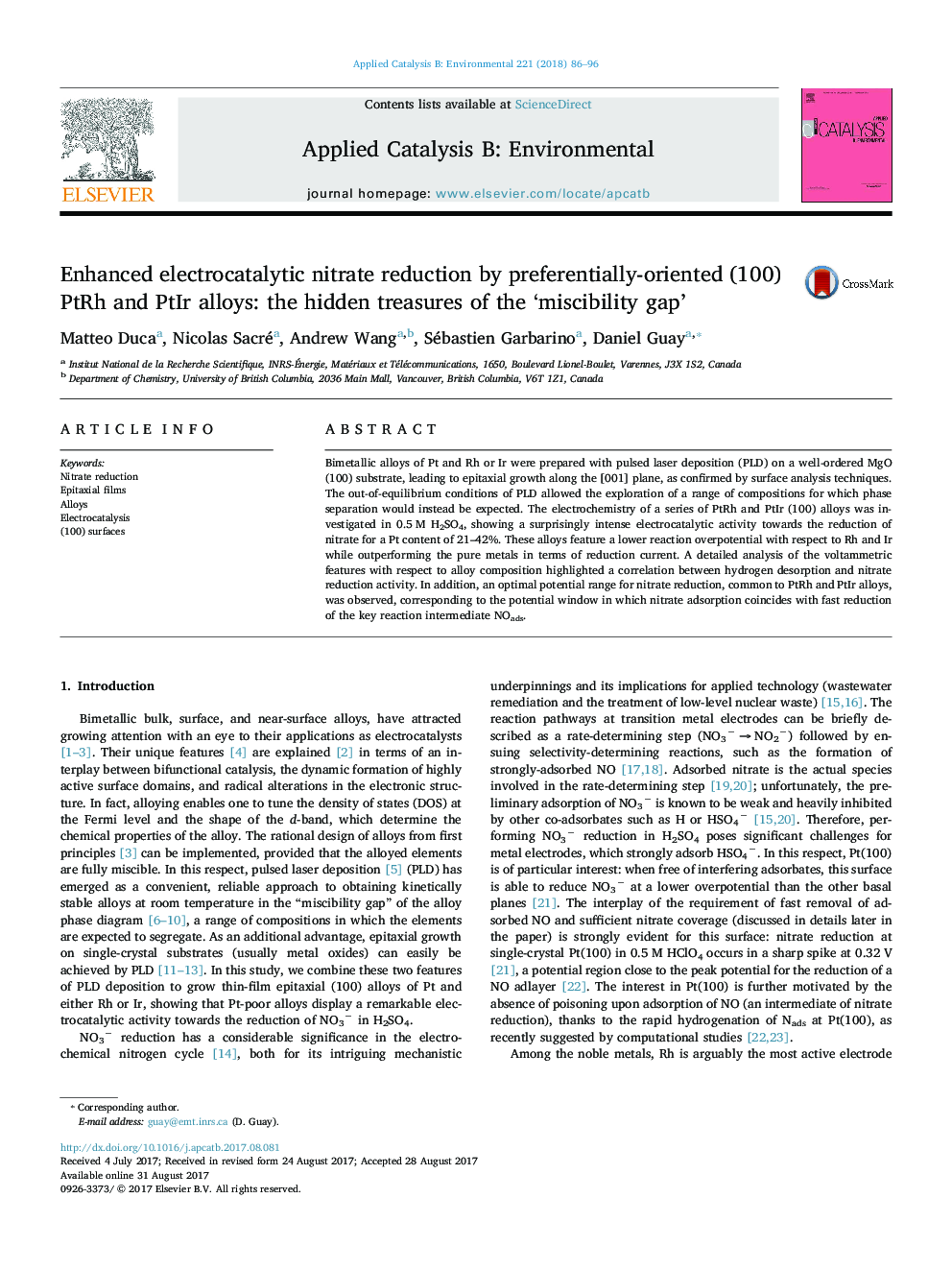| Article ID | Journal | Published Year | Pages | File Type |
|---|---|---|---|---|
| 6453397 | Applied Catalysis B: Environmental | 2018 | 11 Pages |
â¢(100) Preferentially-oriented thin-film PtRh and PtIr alloys were prepared by PLD.â¢The electrochemical response in 0.5 M H2SO4 reflects their bimetallic character.â¢Alloying Rh with 21-42% Pt significantly enhances NO3â reduction.â¢Trends in nitrate reduction activity correlate with hydrogen desorption at alloys.
Bimetallic alloys of Pt and Rh or Ir were prepared with pulsed laser deposition (PLD) on a well-ordered MgO(100) substrate, leading to epitaxial growth along the [001] plane, as confirmed by surface analysis techniques. The out-of-equilibrium conditions of PLD allowed the exploration of a range of compositions for which phase separation would instead be expected. The electrochemistry of a series of PtRh and PtIr (100) alloys was investigated in 0.5Â M H2SO4, showing a surprisingly intense electrocatalytic activity towards the reduction of nitrate for a Pt content of 21-42%. These alloys feature a lower reaction overpotential with respect to Rh and Ir while outperforming the pure metals in terms of reduction current. A detailed analysis of the voltammetric features with respect to alloy composition highlighted a correlation between hydrogen desorption and nitrate reduction activity. In addition, an optimal potential range for nitrate reduction, common to PtRh and PtIr alloys, was observed, corresponding to the potential window in which nitrate adsorption coincides with fast reduction of the key reaction intermediate NOads.
Graphical abstractDownload high-res image (174KB)Download full-size image
